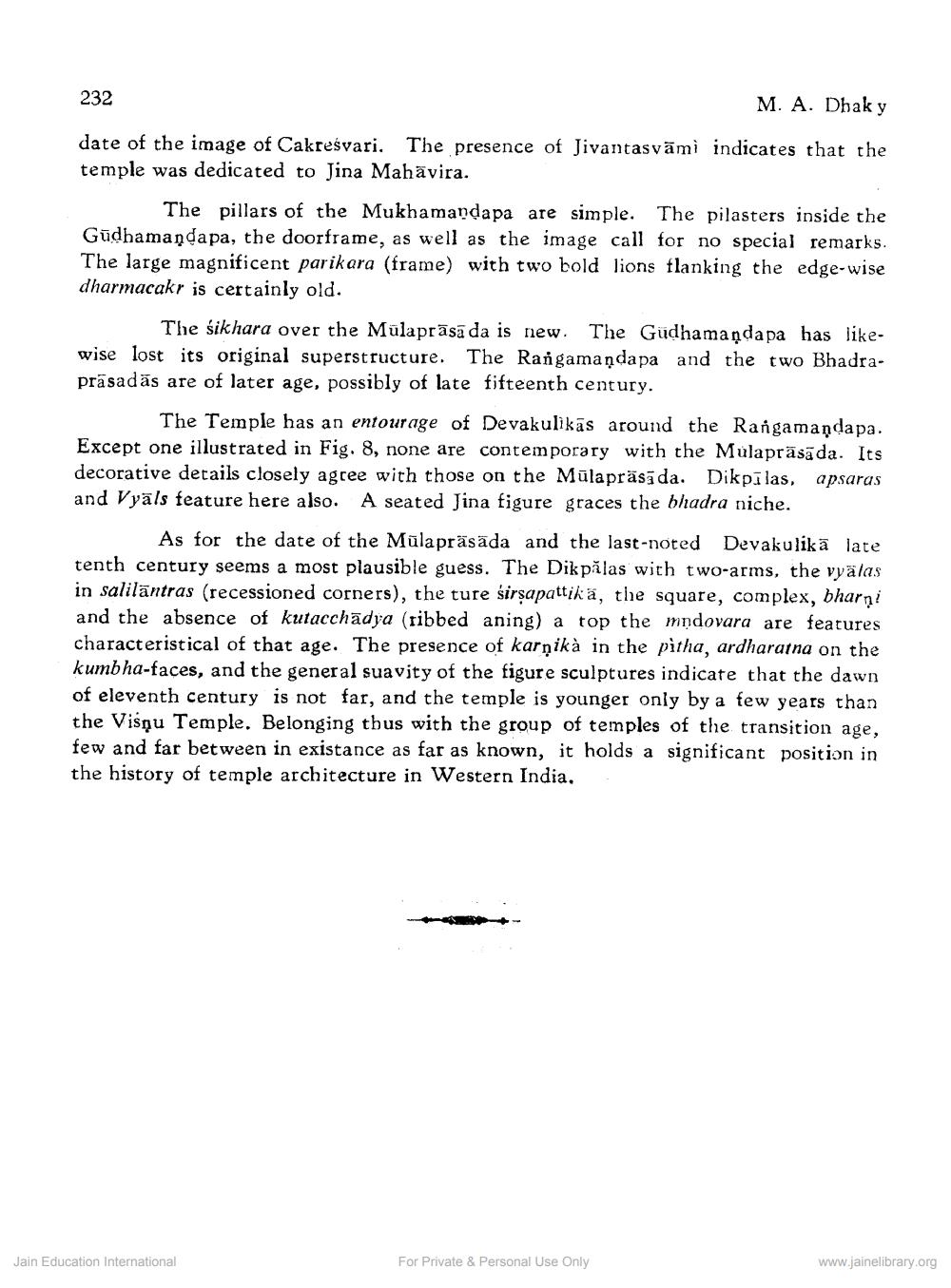Book Title: Temple of Mahavir at Ahar Author(s): M A Dhaky Publisher: Z_Jinvijay_Muni_Abhinandan_Granth_012033.pdf View full book textPage 3
________________ 232 M. A. Dhaky date of the image of Cakresvari. The presence of Jivantasyami indicates that the temple was dedicated to Jina Mahavira. The pillars of the Mukhamandapa are simple. The pilasters inside the Gudhamandapa, the doorframe, as well as the image call for no special remarks. The large magnificent parikara (frame) with two bold lions flanking the edge-wise dharmacakr is certainly old. The sikhara over the Mulaprasa da is new. The Gudhamandapa has likewise lost its original superstructure. The Rangamandapa and the two Bhadraprasadas are of later age, possibly of late fifteenth century. The Temple has an entourage of Devakulikas around the Rangamandapa. Except one illustrated in Fig. 8, none are contemporary with the Mulaprasada. Its decorative details closely agree with those on the Mulaprasada. Dikpilas, apsaras and Vyals feature here also. A seated Jina figure graces the bhadra niche. As for the date of the Mulaprasada and the last-nored Devakulika late tenth century seems a most plausible guess. The Dik palas with two-arms, the vyalas in salilantras (recessioned corners), the ture sirsapattika, the square, complex, bharni and the absence of kutacchadya (ribbed aning) a top the modovara are features characteristical of that age. The presence of karnika in the pitha, ardharatna on the kumbha-faces, and the general suavity of the figure sculptures indicate that the dawn of eleventh century is not far, and the temple is younger only by a few years than the Visnu Temple. Belonging thus with the group of temples of the transition age, few and far between in existance as far as known, it holds a significant position in the history of temple architecture in Western India, Jain Education International For Private & Personal Use Only www.jainelibrary.orgPage Navigation
1 2 3
